Abstract
A 15-sec stimulus followed by unavoidable monetary loss was presented to human subjects who were avoiding loss on a free-operant schedule. As has been observed in studies where shock is the aversive event, initial reactions to the pre-loss stimulus were transient increases in overall and stimulus rates. Unlike shock studies, continued training produced decreased rates, in the presence of the 15-sec stimulus, which were maintained in two of three subjects. Subsequent observations indicated that lowered rates were a function of the subject's rate of avoidance responding, the duration of the stimulus, and the scheduling of avoidable losses. Increasing the duration of the stimulus eliminated lowered rates in the presence of the stimulus and subsequent exposures to conditions which previously produced lowered rates did not result in recovery of the phenomenon. Introduction of the pre-loss stimulus on an extinction baseline (avoidable losses were omitted), however, reinstituted lowered rates. It is proposed that the pre-loss stimulus assumed discriminative control over low rates because responding in the presence of the stimulus was ineffective in avoiding the unavoidable loss. Recovery from lowered rates is attributed to the occurrence of avoidable losses during the stimulus period, and maintenance of lowered rates on the extinction schedule to the omission of such avoidable losses.
Full text
PDF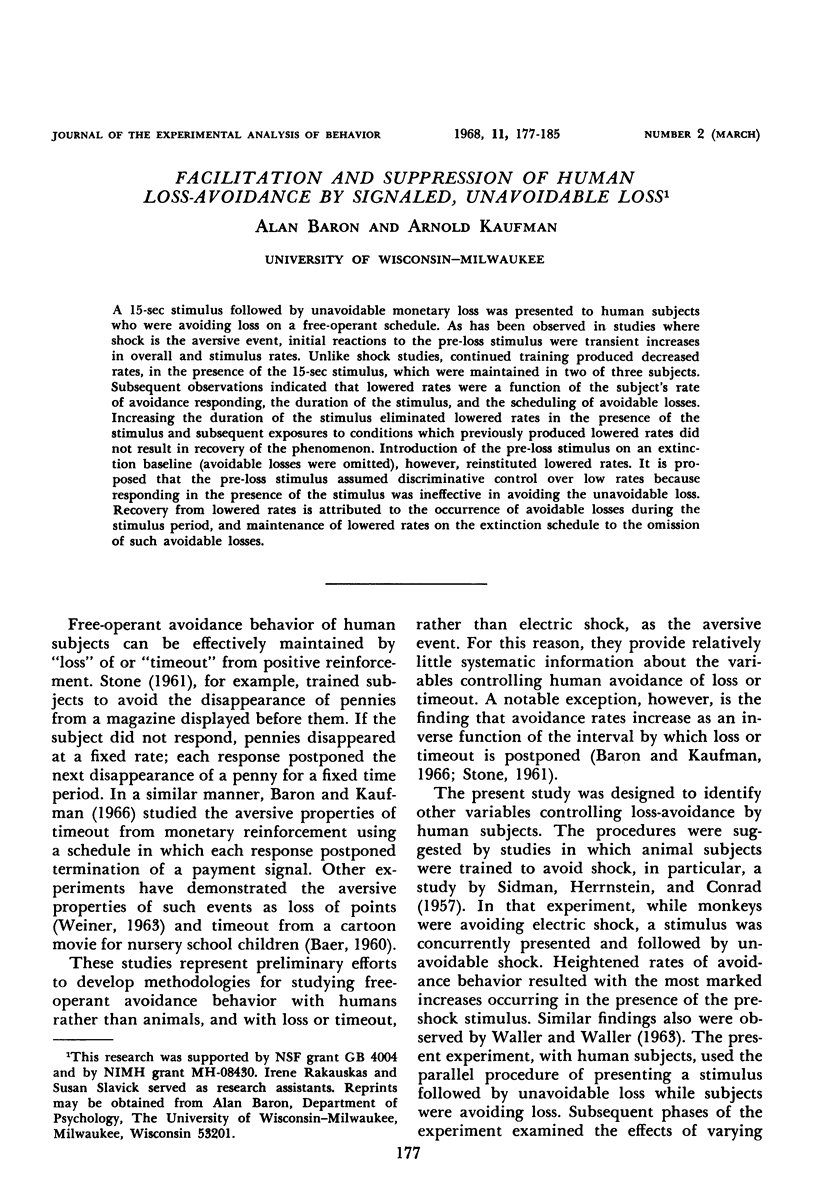
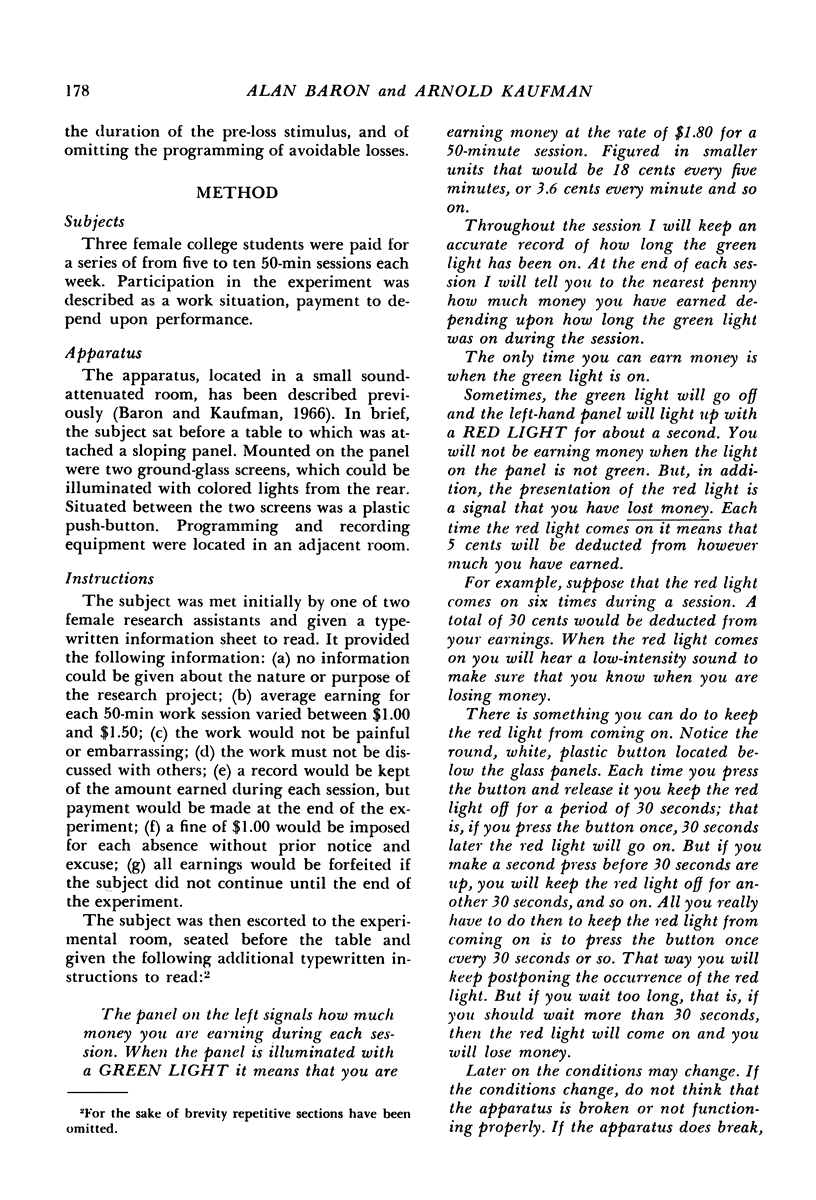
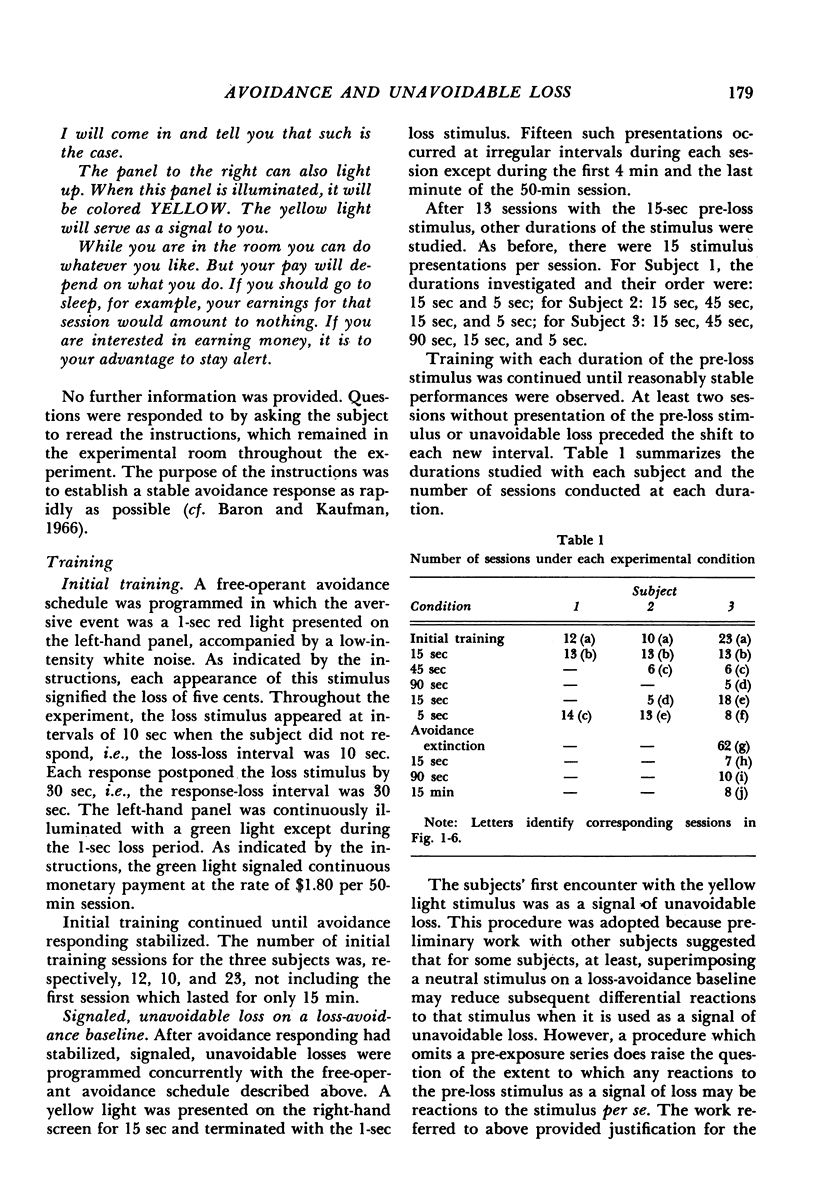
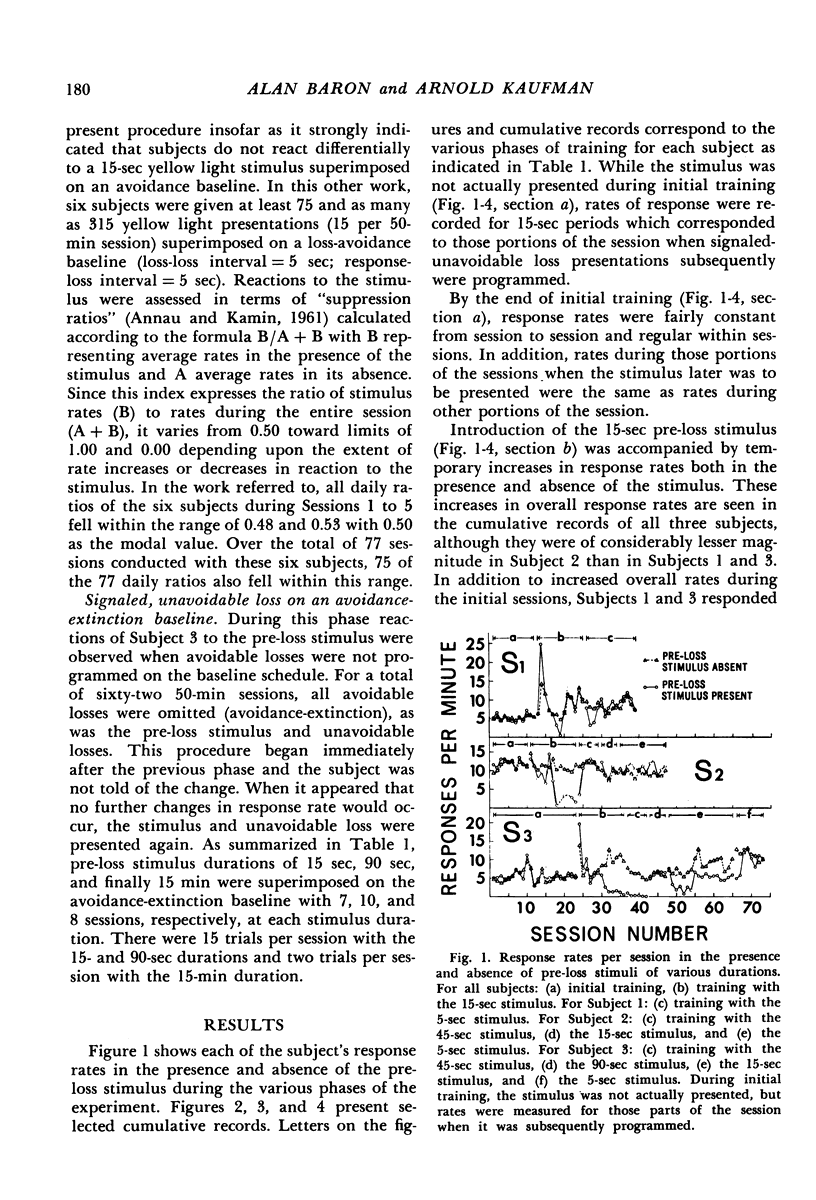
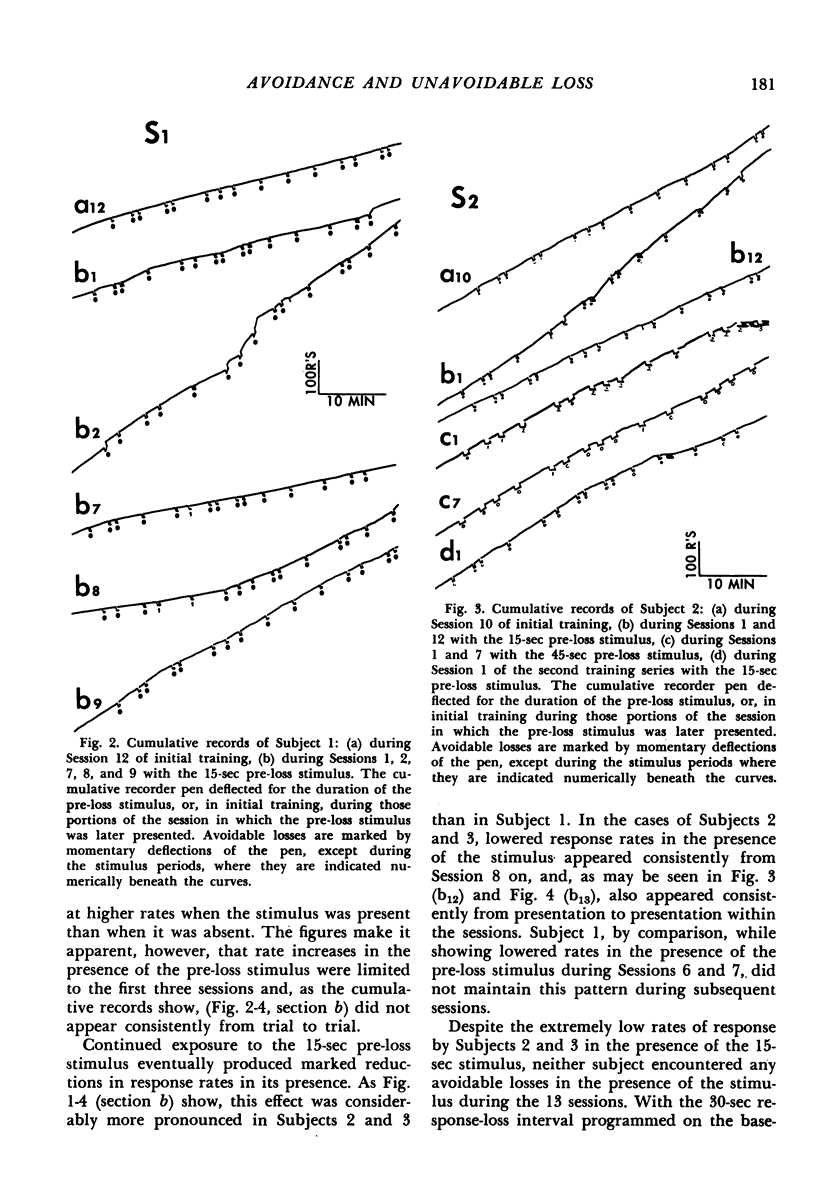

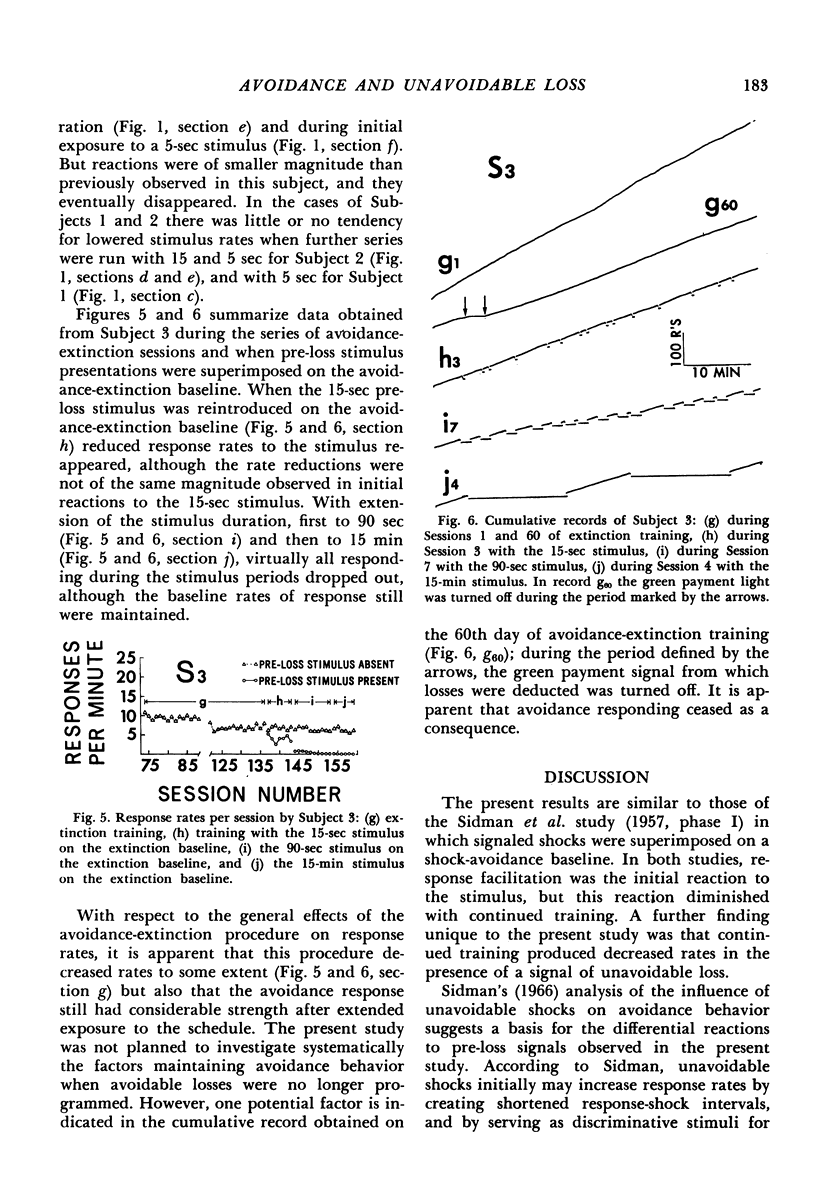

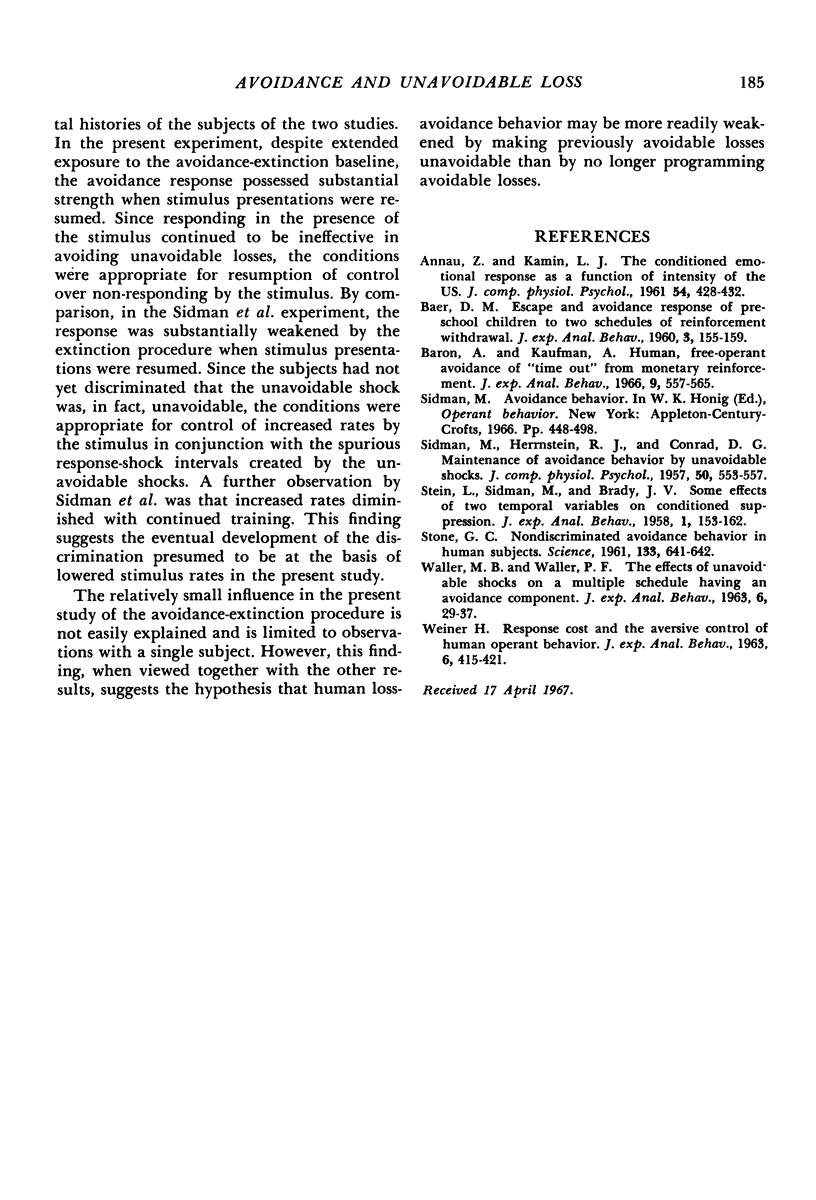
Selected References
These references are in PubMed. This may not be the complete list of references from this article.
- ANNAU Z., KAMIN L. J. The conditioned emotional response as a function of intensity of the US. J Comp Physiol Psychol. 1961 Aug;54:428–432. doi: 10.1037/h0042199. [DOI] [PubMed] [Google Scholar]
- BAER D. M. Escape and avoidance response of pre-school children to two schedules of reinforcement withdrawal. J Exp Anal Behav. 1960 Apr;3:155–159. doi: 10.1901/jeab.1960.3-155. [DOI] [PMC free article] [PubMed] [Google Scholar]
- Baron A., Kaufman A. Human, free-operant avoidance of "time out" from monetary reinforcement. J Exp Anal Behav. 1966 Sep;9(5):557–565. doi: 10.1901/jeab.1966.9-557. [DOI] [PMC free article] [PubMed] [Google Scholar]
- SIDMAN M., HERRNSTEIN R. J., CONRAD D. G. Maintenance of avoidance behavior by unavoidable shocks. J Comp Physiol Psychol. 1957 Dec;50(6):553–557. doi: 10.1037/h0043500. [DOI] [PubMed] [Google Scholar]
- Stein L., Sidman M., Brady J. V. Some effects of Two Temporal Variables on Conditioned Suppression. J Exp Anal Behav. 1958 Apr;1(2):153–162. doi: 10.1901/jeab.1958.1-153. [DOI] [PMC free article] [PubMed] [Google Scholar]
- Stone G. C. Nondiscriminated Avoidance Behavior in Human Subjects. Science. 1961 Mar 3;133(3453):641–642. doi: 10.1126/science.133.3453.641. [DOI] [PubMed] [Google Scholar]
- WALLER M. B., WALLER P. F. The effects of unavoidable shocks on a multiple schedule having an avoidance component. J Exp Anal Behav. 1963 Jan;6:29–37. doi: 10.1901/jeab.1963.6-29. [DOI] [PMC free article] [PubMed] [Google Scholar]
- WEINER H. Response cost and the aversive control of human operant behavior. J Exp Anal Behav. 1963 Jul;6:415–421. doi: 10.1901/jeab.1963.6-415. [DOI] [PMC free article] [PubMed] [Google Scholar]


